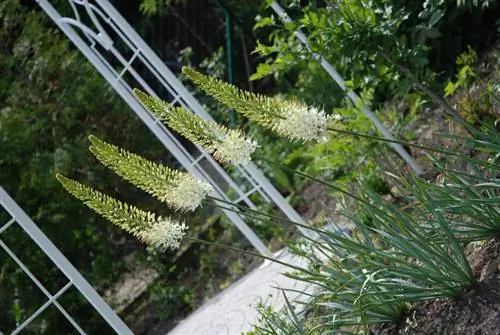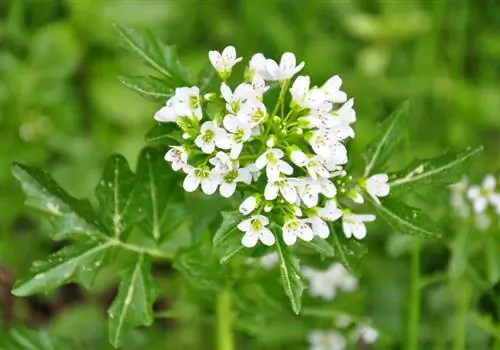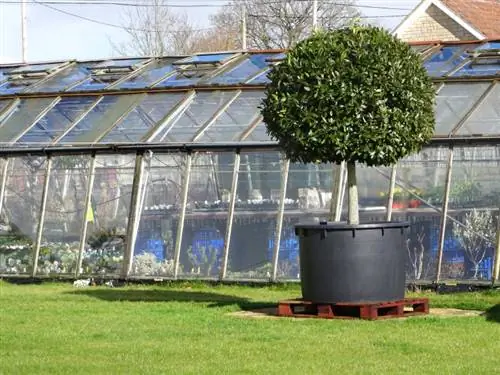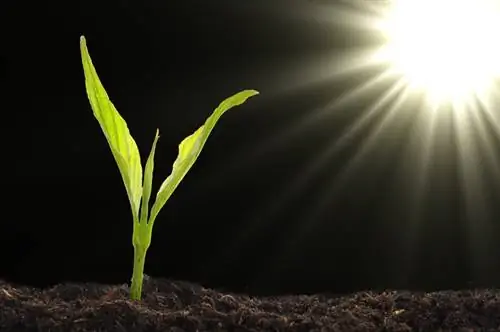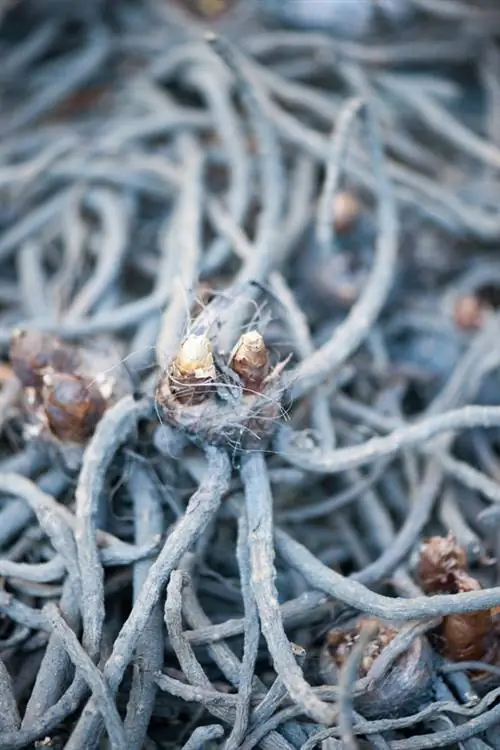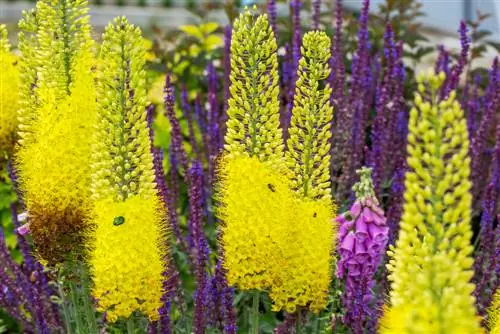- Author admin [email protected].
- Public 2023-12-16 16:46.
- Last modified 2025-01-23 11:20.
The imposing appearance of the steppe candle (Eremurus) has given this plant popular names such as “lily tail” or “needle of the Cleoptara”. The popular garden plants can be displayed particularly effectively in perennial beds and in front of dark ornamental grasses.
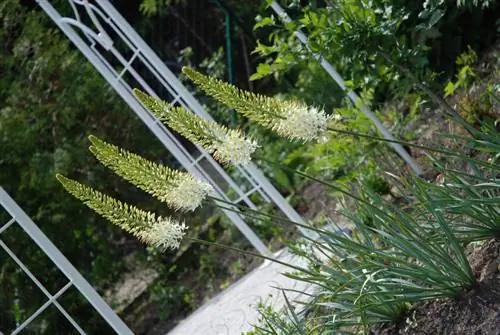
How should you plant steppe candles in the garden?
To successfully plant steppe candles in the garden, choose a sunny, wind-protected location with humus-rich, deep soil. Carefully plant the brittle roots in a hole lined with gravel and sand, maintaining a distance of 30cm between plants.
What characteristics do the plants have?
The steppe candle is one of the asphodel plants and has rather inconspicuous leaves. The flowers of most subspecies are all the more impressive and, thanks to the individual flowers that open from below, inspire with a particularly long-lasting bloom. The plant has thick-fleshed rhizome roots as a survival organ, with which it can overwinter quite easily in this country.
What should an ideal location for steppe candles in the garden be like?
In order to be able to collect enough energy for the formation of the magnificent inflorescences, steppe candles need a location that is as sunny as possible. This should also be as sheltered from the wind as possible and have humus-rich and deep soil. This means that necessary care measures such as stabilizing the flowers with support rods can sometimes be omitted. A combination with the following plant species is particularly visually appealing in the garden:
- Ornamental grasses
- Climbing roses
- Turkish Poppy
- Turtle millet
- Peony
Since the leaves of the steppe candle often wither during the flowering period, a suitable “screen” should be created in the perennial bed with other plants.
What should you consider when planting steppe candles?
Since the starfish-like roots are very brittle, they should be placed as carefully as possible during planting time in the planting hole, which was previously dug a little deeper and lined with fine gravel and sand. This measure also achieves the necessary drainage to keep waterlogging away from the sensitive roots of the steppe candle.
How can steppe candles be propagated?
After a few years in a well-suited location, steppe candles often not only produce several flower stalks, but also produce daughter plants from so-called breeding bulbs underground. For practical reasons, growing the steppe candle from seeds is less important than dividing the roots, which can be done in early autumn.
When is the best time to plant steppe candles?
In order to achieve flowering in the following year if possible, the roots of the steppe candles should be planted from the end of August, but at the latest by late autumn.
How long does the flowering period of steppe candles last?
Most steppe candles bloom between May and July, depending on location and weather. Since the flowers last for a long time as cut flowers after the first individual flowers have bloomed, the flowers of the various Eremurus species are very popular as home decorations in floor vases.
Which substrate has a positive effect on the growth of steppe candles?
The subsoil for growing steppe candles in the garden should be deep and rich in humus; soils that are too clayey can be protected against the risk of waterlogging by adding gravel and sand. If the steppe candles repeatedly fail to bloom, it may be necessary to improve the soil with nutrient-rich compost and garden lime (€19.00 on Amazon).
Tip
So that steppe candles can develop optimally and their up to 2.5 meter high flowers can develop unhindered, a minimum distance of around 30 centimeters should be maintained between the individual plants.

